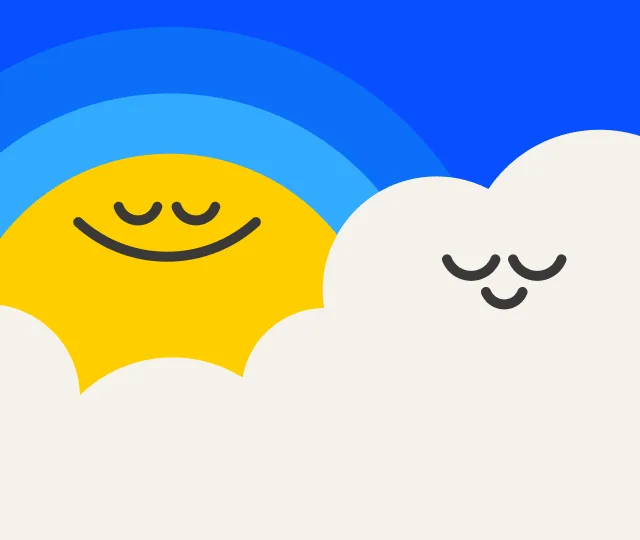What it’s like to have high-functioning anxiety
Sara L.
Jun 14, 2021
Busy and in control. High-achieving and perfectionistic. Driven by details and order in a desperate attempt to calm racing thoughts, worry, and the fear that invade every ounce of the mind and body. An over-thinker with a tendency to perseverate, dwell, and stew on everything.

Watch The Hole in the Road
1 min
As much as those who experience these symptoms would like to be able to turn it off or put it on pause, they can’t. Most days, their thoughts turn into worries and their worries, in turn, consume their thoughts. This creates a constant state of “what if?” But this isolated turmoil is often hidden by smiles and laughs, success and achievements, and a decent dose of extroversion. Ironically, this nervous energy is what keeps them moving forward. It’s always there pushing them to do more, achieve more, succeed more, and be better. This is the face of “high-functioning” anxiety.
Identifying with “high-functioning” anxiety
Anxiety disorders are the most common mental illness in the U.S., affecting 40 million American adults age 18 or older, or 18 percent of the population. While not an official diagnosis, the term “high-functioning” as it relates to an anxiety disorder—especially generalized anxiety disorder (GAD)—is something many people who struggle with anxiety identify with. “As therapists, we talk about a lot of people even with diagnosed anxiety disorders as ‘high-functioning,’ and many of them are,” says Lynne Siqueland, Ph.D. of the Children's and Adult Center for OCD and Anxiety. “They are doing really well in their jobs, in relationships and raising kids, despite having significant anxiety.”
Identifying signs and symptoms
Research shows that people with an anxiety disorder perceive the world in a fundamentally different way. People with GAD experience excessive anxiety and worry, often expecting the worst even when there is no apparent reason for concern. There is constant mental exhaustion weighing heavily on those struggling with anxiety because their mind never stops going. These intense feelings of worry require a lot of energy to battle the thoughts of what could go wrong, has gone wrong, or may go wrong in the far future.
This continuous loop of stress and overthinking thoughts of “worst case scenario” is often exacerbated by the fact that non-anxious people see this way of thinking as irrational, illogical, emotional, and crazy. Anxiety is not easily explicable, at least not to those who don’t experience it. In fact, only 25 percent of people with a mental health disorder feel like others understand their experience. While a person with high-functioning anxiety can appear as though in control and actively engaged in the daily tasks of life, underneath this confident exterior, it is a fight to make it through the day. “Much of anxiety is internal-uncontrolled worry or social evaluation, and no one would know unless the person has a lot of physical symptoms of avoidance,” says Siqueland. “Many people with mild to severe anxiety will do the essential tasks but limit other experiences or opportunities, and this is what sometimes leads them to treatment.”

Managing and treating anxiety
Anxiety can be managed and treated, but not cured. This is the reality people with anxiety live with every single day. There are a variety of treatment options that are effective in treating anxiety disorders including cognitive behavioral therapy, coping strategies, medication, and alternative therapies such as meditation, acupuncture, mindfulness, and yoga. And there is increasingly compelling evidence making its way to the masses about the effectiveness of mindfulness and meditation to help manage anxiety. In fact, meditation and mindfulness can be a great resource on their own or in combination with other treatments.
“The goal of meditation practice is to be aware, observe and notice thoughts, feelings, and body states without becoming reactive or fused with them (believing them to be true states of the person or the world),” explains Siqueland. “It takes practice but it gives the person both pause and freedom to make choices that are more effective.” New technology has made meditation and mindfulness more accessible, and even mental health practitioners are finding ways to incorporate these “handheld” treatment options into their plans. “I have used Headspace with quite a number of my adult and teen clients and have even been using it myself,” says Siqueland. “The animations really help to describe concepts in an engaging way.” If people have reservations about adding one more thing to a busy schedule, Siqueland advises clients to begin with 10 minutes a day. A smaller commitment can help to make mindfulness a lifestyle change that can be incorporated into daily life.


Be kind to your mind
- Access the full library of 500+ meditations on everything from stress, to resilience, to compassion
- Put your mind to bed with sleep sounds, music, and wind-down exercises
- Make mindfulness a part of your daily routine with tension-releasing workouts, relaxing yoga, Focus music playlists, and more
Annual - billed at $69.99 USD/yr
14 days free
$5.83 USD/month
Monthly
7 days free
$12.99 USD/month

Meditation and mindfulness for any mind, any mood, any goal

Stay in the loop
Be the first to get updates on our latest content, special offers, and new features.
By signing up, you’re agreeing to receive marketing emails from Headspace. You can unsubscribe at any time. For more details, check out our Privacy Policy.
- © 2025 Headspace Inc.
- Terms & conditions
- Privacy policy
- Consumer Health Data
- Your privacy choices
- CA Privacy Notice







